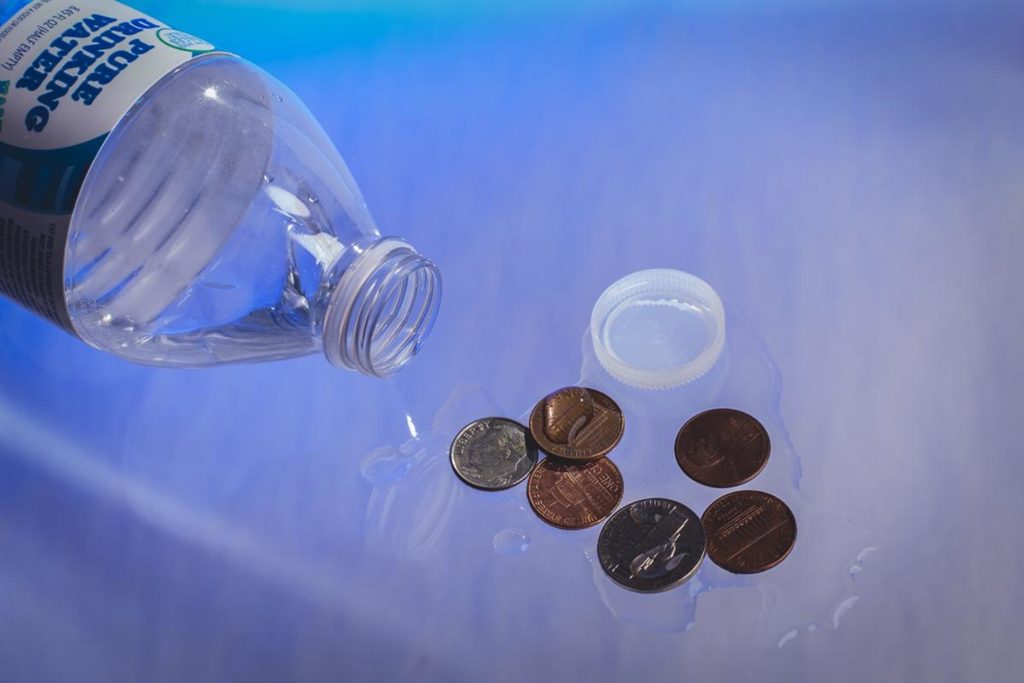Devils (and angels) in the details, Part 5

In early January the California Water Board (SWRCB) published its long-anticipated draft proposal for a statewide low-income water bill assistance program. I’ve blogged about it over the past few weeks*; in this final (I think) post on the proposal, I’ll look at how the SWRCB proposes to pay for the estimated $606 million annual program.
How to raise 600 million dollars
The SWRCB recommends paying for the new water assistance program through “progressive revenue sources… in order not to burden some of the residents that the program seeks to serve.” To that laudable end, the proposal calls for two new taxes:
- A .25% tax on personal incomes over $1 million; and
- A sales tax on bottled water.
The income tax would generate an estimated $466 million annually, while the bottled water tax would generate $154 million. Under California’s Byzantine pubic finance laws both taxes would require supermajorities in the state legislature. The bottled water tax would also have to pass a ballot referendum.
Progressive taxation is crucial to any low-income assistance program, since the whole point is to transfer resources to people who are short on them. A millionaire’s tax makes sense from that perspective; a person whose income tops $1 million annually likely has little difficulty paying his/her water bill, and it’s doubtful that an additional 0.25% tax will much constrain productivity or lifestyle for people with seven-figure incomes.
Robbing Peter
The bottled water tax is thornier.
It’s common for those of us who work on American drinking water issues to think of bottled water as a luxury good. Bottled water is orders of magnitude more expensive than tap water, after all. It also carries some severe negative externalities: it’s lightly regulated, uses lots of energy to produce and transport, and empty bottles create a huge solid waste problem. For all those reasons, taxing bottled water would be progressive, in theory.

In practice, the progressivity of a bottled water tax isn’t so clear. Counterintuitively, in America bottled water consumption is negatively correlated with income—that is, poor and working-class Americans drink much more bottled water than do middle-class and wealthier Americans. Study after study after study show that low-income people and members of racial/ethnic minorities are much more likely to drink bottled water.
Why do lower-income people pay orders of magnitude more for bottled water, when affordable tap water is available? From a health and efficiency perspective, that isn’t rational behavior. It might be cultural, it might be taste/odor preferences, it might be about distrust in government, or it might be something else entirely. In some cases, people served by the smallest, poorest communities that suffer from poor water quality might need bottled drinking water. Raising the cost of bottled water might have the perverse effect of pushing low-income households to drink more soda and sugary beverages.
Whatever the reason for the income-bottled water relationship, the distributional effect of the SWRCB’s proposed tax is clear: the poor will bear a disproportionate burden of any bottled water tax. When you consider that a significant proportion of eligible households will never actually participate in the assistance program, a bottled water tax becomes doubly regressive.
So where do we get the other $150 million?
There’s an intuitive political appeal to using a water-related tax to raise money for water bill assistance.† What kinds of water taxes could be progressive? Here are a couple of half-baked ideas (I don’t have the time or data to bake ’em).

- A tax on “luxury” bottled water. Poor folks aren’t buying $5.00 bottles of FijiWater; they’re buying $9.99 cases of Ozarka at Walmart. A sales tax on water that retails for more than $1.00 per liter would spare the lowest-income households, and probably wouldn’t push them into drinking sugary beverages.
- A tax on residential tap water consumption over 12,000 gallons per month. At 50 gallons per capita per day (reasonably efficient indoor use), a family of four uses about 6,000 gallons per month. In the vast majority of situations, residential water consumption beyond 12,000 gallons a month is for discretionary outdoor use. A main drawback to this kind of tax is that it would irritate water utility managers, who don’t want to act as the state’s tax collectors.
A combination of these two taxes could generate significant revenue without putting the revenue burden of low-income assistance onto the people that it’s intended to help.
*In the past few posts, I’ve summarized the proposal, discussed its potentially perverse incentives for ratemaking, pondered its implications for struggling small systems, and options for administering assistance.
†The SWRCB’s carefully avoids alluding to political appeal, but does note that “fees on bottled water or alcohol would have a nexus to water use.”
